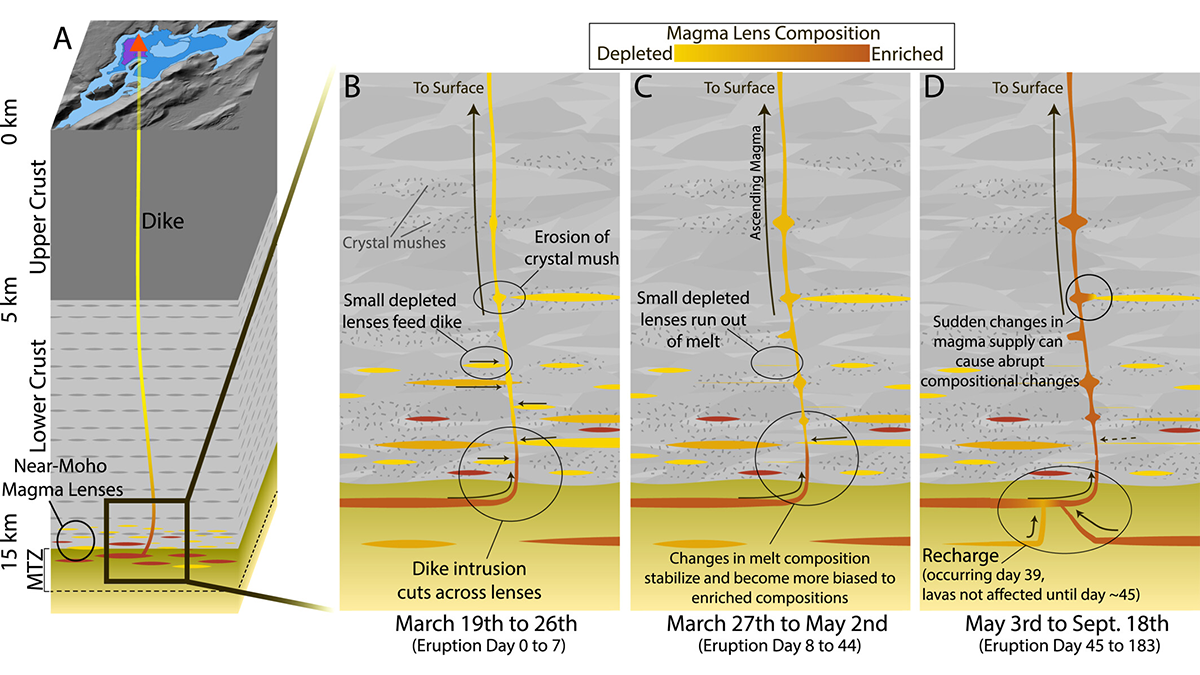Editors’ Highlights are summaries of recent papers by AGU’s journal editors.
Source: AGU Advances
Many might view basalts as rather plain rocks, but fans know that their chemistry contains a wealth of information about processes that shaped their origin and evolution.
Marshall et al. [2024] explore the lavas of Iceland’s 2021 Fagradalsfjall eruptions, analyzing high-frequency geochemical data from half a year’s eruptions to understand magma sources and their exchanges. Across remarkably short timescales there was significant variability in erupted lava chemistry. This suggests that chemically distinct magma bodies feed a lower-crustal reservoir, periodically injecting magma into the crust that also interacts with earlier melt lenses of differing degrees of chemical evolution. This in turn provides insight into near-moho magma storage, the connectivity of magma bodies, and their interactions.
As eruptions continue on the the Reykjanes Peninsula more work of this sort, coupled with geophysical and geodetic observations, will lead to improved understanding of magmatic plumbing systems in this geologic setting.
Citation: Marshall, E. W., Caracciolo, A., Bali, E., Halldórsson, S. A., Matthews, S., Ranta, E., et al. (2024). The petrology and geochemistry of the 2021 Fagradalsfjall eruption, Iceland: An eruption sourced from multiple, compositionally diverse, near-Moho sills. AGU Advances, 5, e2024AV001310. https://doi.org/10.1029/2024AV001310
—Peter Zeitler, Editor, AGU Advances

